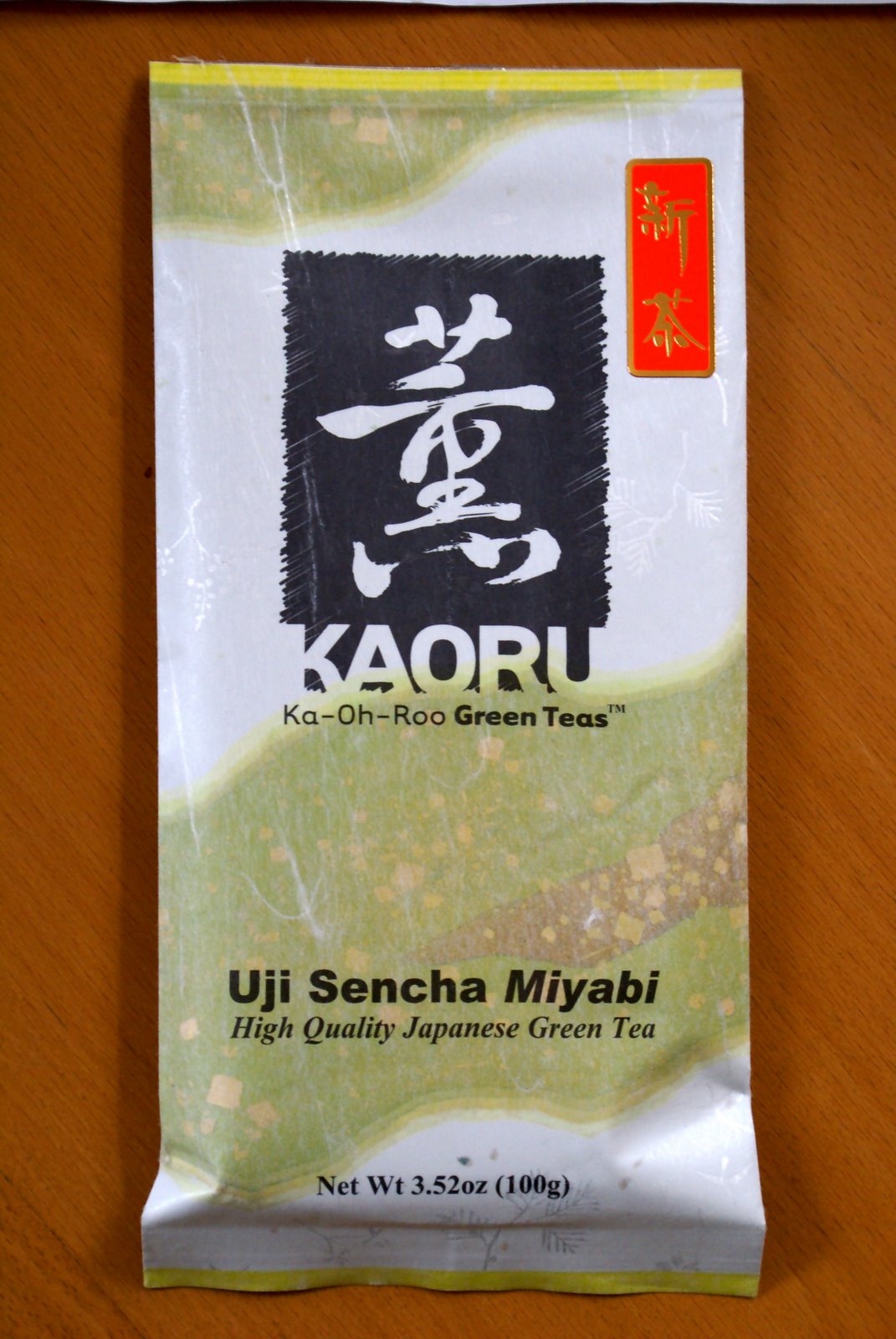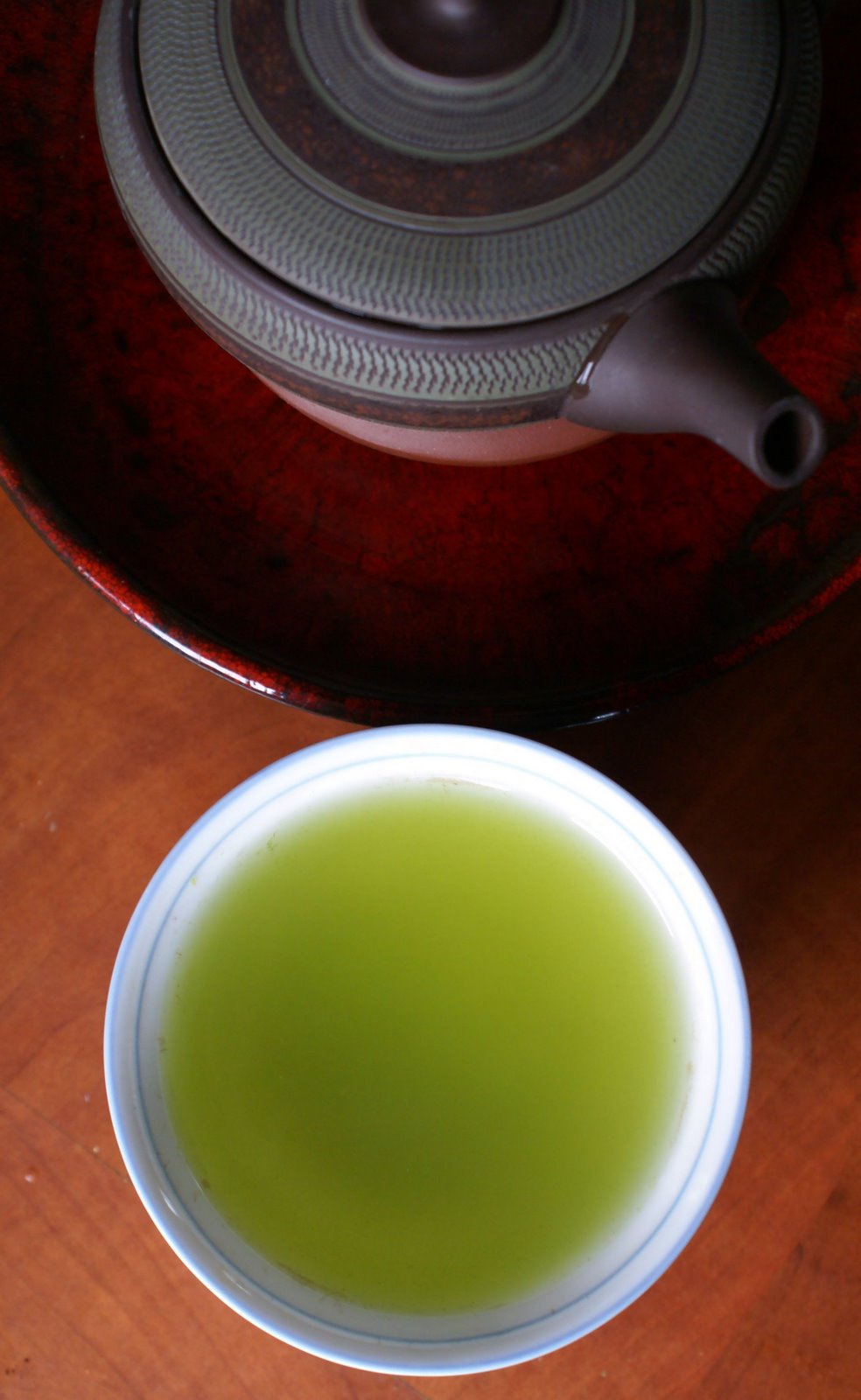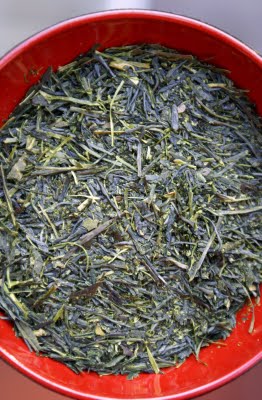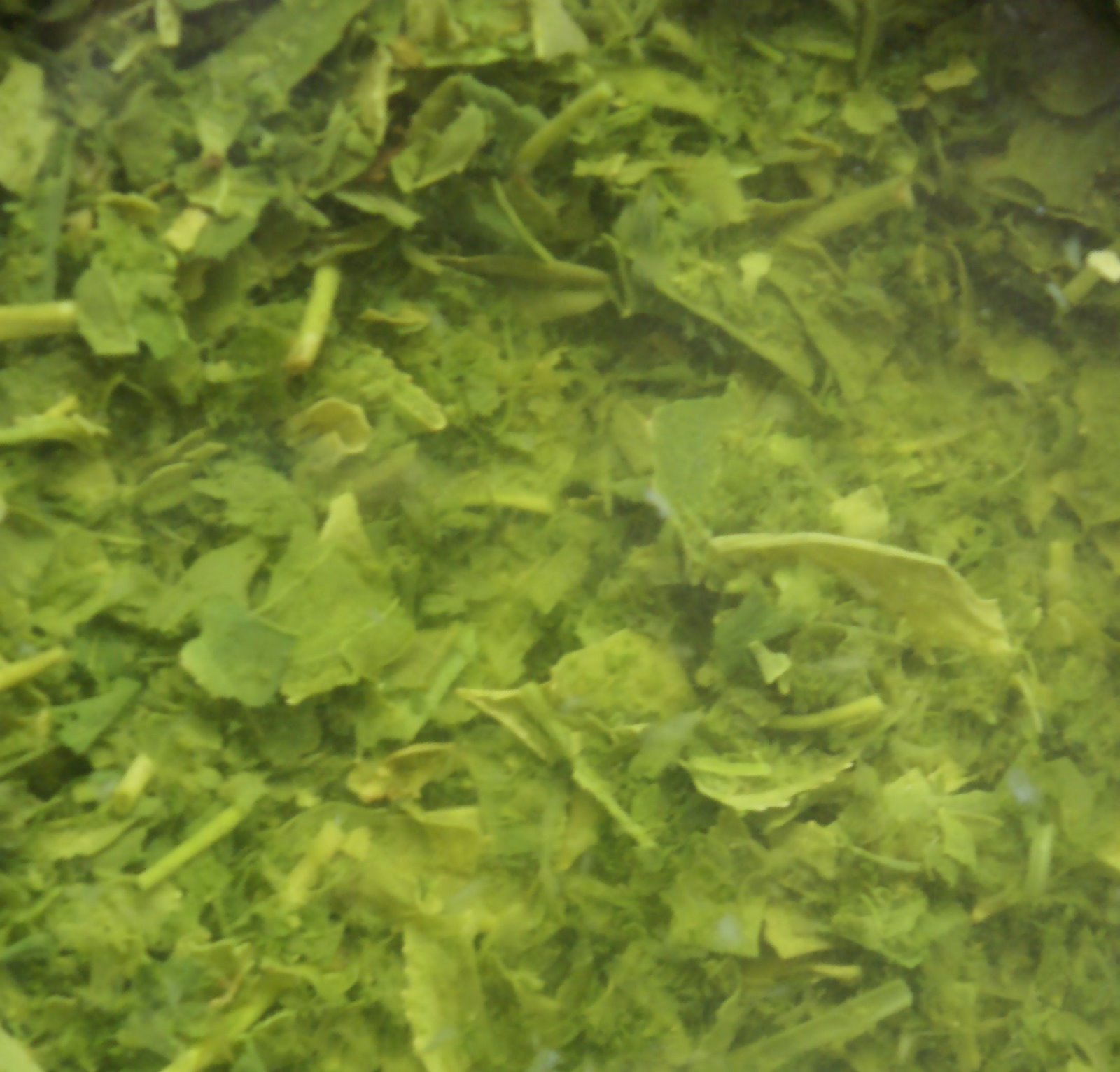Japanese fortnight (4): 2008 Miyabi Sencha
2008 Gyokuro Kame-Jiru-Shi (O-Cha)
2008 Gyokuro Tama Homare (Marukyu)
2008 Kabusecha Takamado (Marukyu)
2008 Karigane Otowa (Marukyu)
2009 Shincha Fukamushi Supreme (O-Cha)
2009 Shincha Shigaraki (Marukyu)
2009 Shincha Shuei (Marukyu)
2009 Shincha Uji Gold (Marukyu)
2009 Shincha Yutakamidori (O-Cha)

O-Cha consider this one of their best offerings. Unlike the Yutakamidori and Fukamushi Supreme that I’ve reviewed earlier (see links at top of page), this tea is from Uji, perhaps Japan’s most prestigious tea-growing appellation. At $26 per 100g, it surely has a prestigious price tag.
It’s interesting how I disagree with this vendor’s product descriptions. The 2009 Yutakamidori is described as heavy-steamed and this Miyabi as medium-steamed, yet there’s no doubt the latter sees heavier steaming. While the Yutakamidori, to me, is chumushi (click link at top of page to see a picture of spent leaves: there is a mixture of heavily fragmented and nearly intact that I find characteristic of medium steaming), the Miyabi is a finer fragmented tea, and it also shows in the infusion:

The dry leaf is similar to the 2009 Fukamushi Supreme in aroma, showing a larger-than-life bouquet of ripe exotic fruits that on the whole is reminiscent of a New Zealand Sauvignon Blanc; compared to the Fukamushi Supreme, it is less tangy, sweeter, fruitier (melon, papaya, some kiwi), and really tremendously enjoyable.

This aromatic register is reflected in the teacup. The scents are elegant and subtle: melon, pomelo, with an underlying vegetality. The combination of sweetness and vegetality (becoming a chewy bitterish seaweedy character when overbrewed) is also to be found in the flavour. There is nearly no astringency but quite a bit of thickness. And interestingly, the second infusion is best in nearly all my trials; while I usually rate my first infusions of Japanese greens highest, this tea is an exception. Somehow, it’s only in the second brewing that flavours seem to come together.
This tea is true to its name: miyabi, ‘elegance’. Despite its obvious thickness and a certain power it focuses around clean, elegant fruit flavours. To get the best of this character, I recommend dosing sparingly: in a comparative tasting with 2, 3 and 4 grams of leaf, the former version was the best.
Is this 2008 showing its age? Honestly, not much. It’s a clean, well-defined, reasonably complex tea of real personality, and it’s perhaps my favourite from the three sencha teas from O-Cha I’ve tried this year. But it’s even more ephemeral than the 2009 offerings from O-Cha, and its plateau of highest quality lasts only a few days from opening the pack; later, there’s a slightly drying seaweedy impression on the palate that’s a telltale sign of a Japanese green going stale. The 2009 is now available and I’m sure it won’t disappoint.


